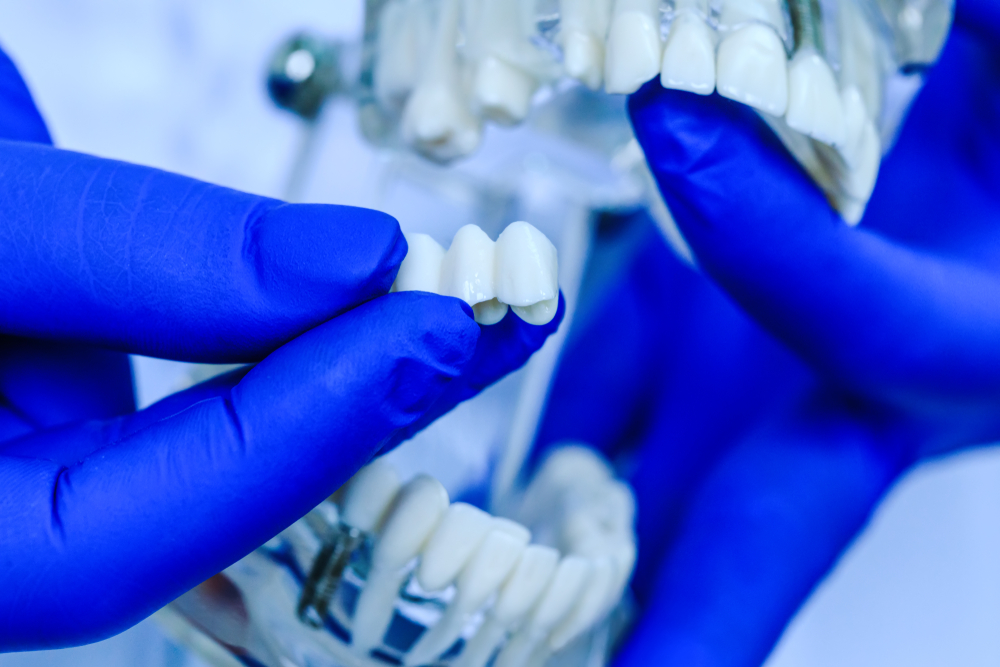Bridges

What Kinds of Dental Bridges are Available?
The process of getting a dental bridge varies depending on what type of bridge we decide is best for your oral health. The different types of dental bridges include:
- Traditional bridges: Traditional bridges fill the gap in your smile with a replacement tooth supported by crowns on either side, bonded to the abutment teeth.
- Cantilever bridges: These bridges use the same process as traditional bridges but only require one abutment tooth for support.
- Maryland bridges: These dental bridges require two abutment teeth, but instead of crowns, use a frame bonded to the back of the abutment teeth.
- Dental implant-supported bridges: These types of bridges utilize dental implants to stabilize and secure the dental bridges and are considered one of the strongest solutions to missing teeth. Two surgeries are required to implant the anchors into your jawbone and to secure the bridge to the healed anchors.
All bridges are customized to your mouth, giving you the most natural smile possible. Most tooth replacements are made from ceramic and porcelain to match the rest of your existing teeth.
What are the Benefits of a Dental Bridge?
Bridges help fill in the gaps of missing teeth in your smile, though they are far from only aesthetic dental procedures. When you have a missing tooth — whether from a dental extraction treatment or an accident — it is important to replace it for a variety of factors, including:
- Chewing: There’s no reason to miss out on your favorite foods because you have trouble eating. A missing tooth can reduce your ability to chew — and can even damage the rest of your teeth because of an improperly distributed force of your bite.
- Speaking: Depending on which tooth is missing, the gap could cause difficulty pronouncing certain words or even developing impediments like lisps.
- Face shape: Depending on its position in your mouth, losing a tooth could affect the shape of your face, affecting the symmetry or causing your cheek to cave inward.
- Alignment: When you lose a tooth, the rest of your teeth are more likely to move out of alignment to try to fill the gap. This could lead to pain, discomfort, and crooked teeth that may make you less likely to smile freely, affecting your self-esteem and mental health.
How are Dental Bridges Maintained?
Practicing good dental hygiene at home is important for maintaining your dental bridge. Brush twice a day and floss every day, and try to rinse with water after eating. Make sure you come in for your regular checkups so we can make sure your dental bridge is in good working condition. With the proper care, you can expect to have your dental bridge for about a decade before requiring maintenance.
Ready to schedule your consultation for a dental bridge? Let us fix your smile and give you the confidence you need! We’re ready to help and are just a phone call away.

 View Sunbury Location
View Sunbury Location View Centerburg Location
View Centerburg Location View South High Location
View South High Location




